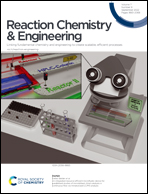Highly conductive CNT aerogel synthesized via an inert FC-CVD technique: a step towards a greener approach
Abstract
Floating catalyst chemical vapor deposition (FC-CVD) is a promising and viable technique for scalability and continuous synthesis of carbon nanotube (CNT) macroassemblies through a single gas phase pyrolysis process. However, progress towards commercialization has been slow due to its multidimensionality of parameter space. Moreover, this synthesis route deploys hydrogen gas, which invokes safety concerns due to its reactivity and explosiveness. Therefore, in this study, we undertook a greener approach and synthesized a highly crystalline and conductive CNT network under an inert atmosphere maintained by argon through a systematic parametric study of its flow rates inside the synthesis reactor. Lower gas flow rates resulted in higher IG/ID values, thermal stabilities, and electrical conductivities at 4.8, 611 °C, and 4.77 × 104 S m−1, respectively, for 250 sccm of argon flow. These results have been duly correlated with gas chemistry during the synthesis, which employed various chemical reactions that augmented the supply of hydrogen gas, leading to improved properties of the final product. Site-specific evaluation of the final products indicated that the difference in quality resulted from the difference in their respective reducing atmosphere. Therefore, this study utilized in situ-produced hydrogen gas for enhancing the structural and electrical properties of CNTs without an external hydrogen gas supply, which is a step forward towards the green synthesis of CNT macroassemblies.



 Please wait while we load your content...
Please wait while we load your content...